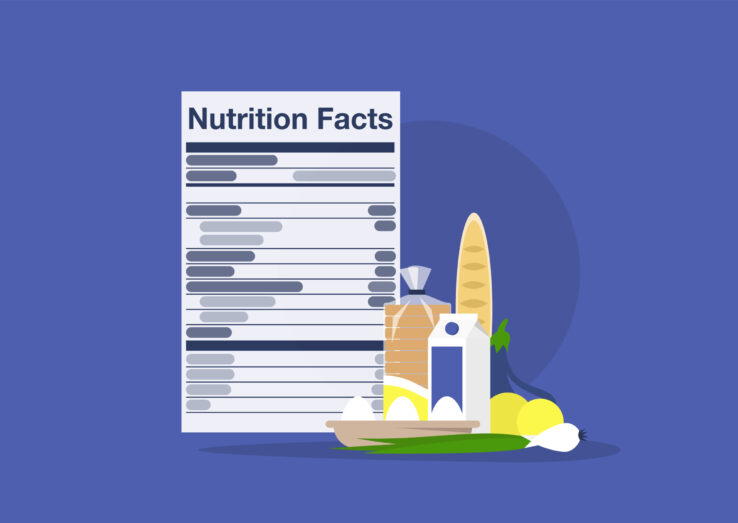FDA’s food labeling requirements are designed to provide consumers with the information they require to make informed choices about the food they eat. If you’re a restaurant owner or manager, you may wonder how to ensure your food labels comply with FDA regulations. Luckily, you can follow a few simple tips to ensure your tags are up to par.
Nutrition labeling for restaurants can be a daunting task, but there are resources available to help. The FDA has a nutrition label generator that can be used to create labels for restaurant menus and other food items. You can visit this site to get accurate and up-to-date nutrition information and to generate nutrition labels for your food products.
What Is Food And Nutrition Labeling?

Source: fdli.org
Food and nutrition labeling is a set of rules that help consumers understand the nutritional content of a meal. The U.S. Food and Drug Administration keeps tabs on it to ensure that all the information on the label is accurate, truthful, and not misleading. It also helps consumers make informed choices about their diet.
Labeling helps consumers understand how much of each nutrient (such as protein, carbohydrates, and fat) is in a particular food product. It can also tell you whether a meal has been genetically modified, contains artificial colors or flavors, or has other additives.
What Does “Healthy” Really Mean On A Food Label?
For some, healthy eating is about consuming nutrient-rich foods that promote overall health and well-being. For others, it’s about following a specific diet plan or avoiding certain ingredients or food groups altogether.
The FDA generally defines “healthy” on a food label as one that meets specific nutritional requirements and is free from unhealthy additives or contaminants.
What Are The Benefits Of Food And Nutrition Labeling?

Source: hsph.harvard.edu
There are many benefits to food and nutrition labeling. The most obvious one is to inform people about their food choices.
In addition to helping people make healthier choices, labeling can also help reduce waste. When people know precisely how much of a particular nutrient they need daily, they are less likely to over purchase or throw away unused meals.
Finally, labeling can play a role in improving public health by providing data that can be used to develop policies and programs aimed at reducing obesity and chronic disease.
For instance, these data from nutrition labels can help public health officials to develop campaigns and encourage people to eat meals rich in these nutrients.
Tips For Restaurants When It Comes To Food And Nutrition Labeling

Source: helpguide.org
Restaurants have a big responsibility when it comes to food and nutrition labeling. Not only do they need to ensure that their menus are accurate, but they also need to ensure that their customers are getting the information they need to make informed decisions.
- Make sure your restaurant menu is accurate and up-to-date. This means ensuring that all of the ingredients listed on your menu contain those ingredients and that the nutritional information is correct.
- Use clear language when describing your dishes. Make sure you use terms like “healthy” or “light” whenever possible to help customers make informed choices about what they eat.
- Keep track of customer feedback. Take note of any complaints or suggestions regarding food and nutrition labeling, and make changes as necessary so that you can provide the most accurate information possible.
- Educate your employees about labeling. Make sure everyone in your restaurant understands how to label items correctly, and be prepared to answer any questions customers may have about the labels. Work with a qualified nutritionist or dietitian to develop healthy, nutritious menu options that meet customer needs and preferences.
- Stay up-to-date with new regulations surrounding food and nutrition. Make sure all menu items meet dietary guidelines. Label any allergens in your meals so that customers with allergies can choose safe products.
Tips For Deciphering Food And Nutrition Labels In A Restaurant
When you visit a restaurant, you must be aware of the food and nutrition labels on the menu. Like most people, when you go out to eat at a restaurant, you only spend a little time looking at the food and nutrition labels. But if you’re trying to watch your weight or eat healthier, it’s essential to pay attention to what’s in your meal.
These labels can help you make informed decisions about what to order and give you an idea of how healthy the meal will be. Here are some tips for deciphering food and nutrition labels in a restaurant:
- Look for the Nutrition Facts label. This will provide you with the calorie content, saturated fat, cholesterol, sodium, carbohydrates, sugars, fiber, and protein information for each item on the menu.
- Look for terms like “low calories,” “fat-free,” or “high in fiber.” These terms indicate that the meal is low in calories, fat-free, or high in fiber.
- Pay attention to the serving sizes. This information will tell you how many servings are in each dish. If there are multiple items on a plate, calculate the servings. The calorie information on a label is usually based on one meal serving. So if a dish has two servings, you’ll need to double the calorie count.
- Compare the ingredients list to your dietary preferences. If a dish contains ingredients you don’t usually eat (like gluten), there might be better choices.
- Pay attention to whether any dishes contain unhealthy fats or sugars. Many restaurants offer healthier options that still taste great.
- Check the ingredients list. This will tell you which ingredients are in the dish and how much of each ingredient is present. Be sure to read all the ingredients carefully since some may contain allergens or other health concerns you should be aware of.
- Check for dietary restrictions. If dietary restrictions or allergies are listed on the menu, ask your server about specific dishes that may work better for your diet/allergies.
Conclusion
As a restaurant owner, keeping your customers informed about what they’re eating is essential. Food and nutrition labeling can help you do just that. Make use of symbols and abbreviations when listing items on your menu so that your customers will know exactly what they’re ordering.
Use clear and easy-to-understand language on your labels so that customers can easily find the information they’re looking for. Following these tips can help make the process easier and ensure that your labels are accurate and compliant.





